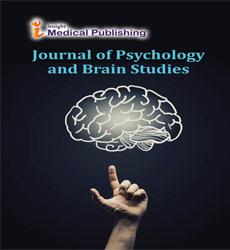Cognitive Processing's Neurological Focuses
Sushree Sunena*
Department of Psychology, Utkal University, Bhubaneswar, Odisha, India
- *Corresponding Author:
- Sushree Sunena
Department of Psychology
Utkal University, Bhubaneswar, Odisha, India
E-mail: sushreesunena04@gmail.com
Received Date: December 09, 2021; Accepted Date: December 14, 2021; Published Date: December 19, 2021
Citation: Chu CC (2021) Sunena S (2021) Cognitive Processing's Neurological Focuses. J Psychol Brain Stud Vol. 5 Iss No.12: 57.
Cognitive neuroscience is the scientific study of the biological processes and features that underpin cognition, with a particular emphasis on the neuronal connections in the brain that are engaged in mental processes. It addresses the subject of how neural networks in the brain influence or control cognitive activity. Cognitive neuroscience is a subfield of neuroscience and psychology that overlaps with fields such as behavioural neuroscience, cognitive psychology, physiological psychology, and affective neuroscience. Cognitive neuroscience is based on cognitive science theories combined with evidence from neurobiology and computer modelling. Parts of the brain are crucial in this subject. Neurons, along with the distinct lobes of the cerebral cortex, play the most important function because the major goal is to build an understanding of cognition from a neurological perspective.
The primary goal of Cognitive Neuroscience is to discover how brain functions influence mental processes and behaviour. The articles in this Special Issue of Brain Sciences aim to achieve a more sophisticated understanding of the neural basis of cognition by demonstrating experimental techniques for studying functional interactions within the brain and models to better understand the basic components of human cognition, such as awareness, perception, attention, reasoning, language, decision making, memory, action control, and executive functions, in healthy people and in patients. Our brain constantly integrates and accumulates information from various sensor systems in order to build a coherent and unified experience of the world's salient events.
The literature supports the concept that integration can occur at many phases of stimulus processing, including both bottom– up and top–down control. However, there is no evidence of anticipatory multisensory integration occurring prior to the presentation of the stimulus. The ERPs obtained in the two unimodal tasks were then summarised and compared to the AV condition in order to determine any anticipatory multimodal effect owing to cortical activation. The preparatory sensory ERP components' visual negativity (vN) for visual modality and auditory positivity (aP) for auditory modality were the focus of the analysis. When the stimuli are presented concurrently, the vN and aP components exhibit much greater amplitude and an earlier onset than the total of the unimodal circumstances. As a result, stronger and earlier sensory preparation would indicate the presence of cross-modal interactions even before the stimulus was presented. These findings show that, given the unavoidable multimodal nature of the real-world environment, our brains appear to plan ahead of time for numerous sources of sensory input to aid in the actual experience of events.
Open Access Journals
- Aquaculture & Veterinary Science
- Chemistry & Chemical Sciences
- Clinical Sciences
- Engineering
- General Science
- Genetics & Molecular Biology
- Health Care & Nursing
- Immunology & Microbiology
- Materials Science
- Mathematics & Physics
- Medical Sciences
- Neurology & Psychiatry
- Oncology & Cancer Science
- Pharmaceutical Sciences
